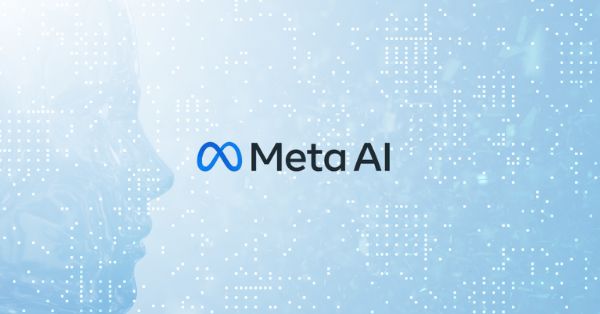AT&T has announced a $5.75 billion all-cash agreement to acquire Lumen Technologies’ Mass Markets fiber business, marking a major step in its strategy to expand high-speed broadband access across the United States. The deal, expected to close in the first half of 2026, positions AT&T to double the reach of its fiber network by 2030, ultimately targeting approximately 60 million fiber-enabled locations.
This acquisition includes nearly all of Lumen’s Quantum Fiber operations across 11 states, with about 1 million subscribers and over 4 million enabled locations. It signals AT&T’s intention to scale its consumer connectivity services, particularly fiber broadband—outside of its traditional wireline territories.
Why AT&T Acquires Lumen: Strategic Goals Behind the $5.75B Fiber Deal
According to AT&T CEO John Stankey, this transaction represents a long-term infrastructure investment that aligns with the company’s mission to deliver high-quality, fiber-based internet services. “We’re leading the race to connect more Americans with fiber, the best broadband technology available,” said Stankey.
The deal brings significant strategic advantages:
- Expanded metro market reach: AT&T will gain access to key metro areas such as Denver, Las Vegas, Phoenix, Portland, and Seattle.
- New fiber build capabilities: The acquisition includes Lumen’s existing construction assets and fiber network components, enabling faster expansion of AT&T Fiber.
- Customer growth opportunities: By leveraging AT&T’s sales channels and brand recognition, the company aims to increase customer penetration in the newly acquired territories.
After AT&T Acquires Lumen Fiber, Lumen Refocuses on Enterprise and AI
For Lumen, the divestiture is part of a focused pivot toward enterprise and wholesale services. The company is retaining all of its national, regional, and metro fiber backbone infrastructure, which will continue to support its enterprise networking offerings.
CEO Kate Johnson emphasized that Lumen’s core growth strategy lies in servicing businesses in a “multi-cloud, AI-first world.” With this transaction, Lumen plans to:
- Accelerate enterprise network innovation by focusing on architecture developments like Direct Fiber Access, Multicloud Gateways, and Cloud On-ramps.
- Scale its digital platform for faster, secure, and simplified enterprise networking experiences.
- Strengthen its financial footing, using $4.2 billion in net proceeds to pay down $4.8 billion in high-interest debt, improving cash flow and reducing annual interest expenses by $300 million.
The company’s shift follows major AI-driven infrastructure investments, including $8.5 billion in networking contracts with hyperscale cloud providers. Lumen plans to expand its backbone network to 47 million intercity fiber miles by 2028.
AT&T Acquires Lumen Fiber Assets: Inside the NetworkCo Subsidiary Structure
The acquired assets will be held under a newly formed AT&T subsidiary called “NetworkCo.” After the transaction closes, AT&T plans to bring in an equity partner within 6 to 12 months, converting NetworkCo into a wholesale commercial open access platform. AT&T will remain the anchor tenant, continuing to serve all acquired customers directly.
This structure is expected to support AT&T’s capital-efficient expansion strategy outside its legacy footprint. By partially divesting NetworkCo, AT&T aims to unlock investment capital while maintaining control over customer experience and network performance.
AT&T Acquires Lumen: Financial Impact and Broadband Market Implications
The transaction is not expected to significantly impact AT&T’s financial performance in the short term. According to AT&T’s 2024 Analyst & Investor Day guidance:
- The deal will be accretive in the long term, contributing positively to adjusted EBITDA and free cash flow.
- AT&T will remain within its net debt-to-adjusted EBITDA target of 2.5x.
- The company reiterated plans to repurchase at least $3 billion of its common stock by the end of 2025 under its existing $10 billion share buyback authorization.
From Lumen’s perspective, the reduction in Mass Markets fiber-related capital expenditures—estimated at around $1 billion annually—will boost cash flow and enable further investment in its enterprise innovation initiatives.
Regulatory and Operational Timeline
The deal requires standard regulatory approvals, including clearance from the Department of Justice. Once approved, AT&T will assume full operational control of the fiber assets and transition approximately 1 million Quantum Fiber subscribers to AT&T Fiber.
As part of the agreement:
- Lumen will provide transition services for up to two years post-close, covering field operations, IT systems, billing, and customer support.
- Certain Lumen employees may move to AT&T or NetworkCo, ensuring continuity during integration.
- AT&T will also gain long-term access to Lumen’s poles, conduits, and central offices, which are essential for ongoing service delivery and network scaling.
Positioning for a Competitive Fiber Future
AT&T’s acquisition follows a string of high-profile telecommunications deals as providers race to consolidate fiber assets and expand broadband coverage:
- Verizon’s acquisition of Frontier Communications’ assets,
- Charter Communications’ $34.5 billion merger with Cox Communications.
These moves reflect a broader industry trend of consolidation aimed at preparing networks for rising data consumption, fueled by cloud services, video streaming, remote work, and the AI boom.
With this latest deal, AT&T not only gains infrastructure in underpenetrated markets but also positions itself for increased convergence between fiber and 5G services. Customers who bundle 5G and fiber are known to offer higher lifetime value and customer retention.
Final Thoughts: Fiber as the Backbone of Future Connectivity
Fiber is widely viewed as the most robust broadband technology for handling the surge in data traffic across homes and businesses. AT&T’s move to acquire Lumen’s consumer fiber operations strengthens its position as a national leader in fiber broadband deployment and aligns with the company’s broader goal of enabling seamless, high-performance connectivity.
Meanwhile, Lumen is doubling down on its role as a digital infrastructure partner for enterprises, banking on demand for advanced, intelligent networks driven by AI, edge computing, and multicloud ecosystems.
With both companies sharpening their focus, the deal stands to reshape the fiber landscape and bring long-term benefits to customers, investors, and the U.S. broadband ecosystem.





















